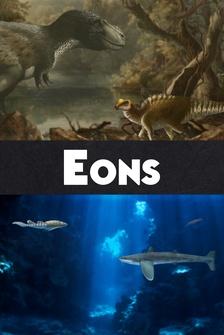- Earth's oceans are connected by a vast global conveyor belt of moving water, a planetary circulatory system that transports heat, nutrients, and even animals around the globe.
And just like your circulatory system keeps you alive, Earth's network of moving ocean water keeps the planet healthy.
It powers a huge part of Earth's weather and climate.
It shapes whole ecosystems.
Ocean currents have even influenced the history of human civilization.
And the engine of this whole global ocean current, it's powered by just salt, some sunlight, and a little wind.
Pretty cool, but you know what's not pretty cool?
Climate change.
(soft taut music) And as we continue to belch out gigatons of prehistoric carbon into the atmosphere like some big sweaty hot blanket, Earth's ocean current circulatory system might be about to break.
Here's how it could happen, and how to stop it.
(bright orchestral music) In the 1800s, a message in a bottle was thrown from a ship in the Indian Ocean with just a piece of paper inside.
It washed up here in Australia where a beachgoer stumbled upon it.
But the bottle wasn't found in the 1800s.
It was found in 2018, 132 years after it was tossed into the ocean.
The note inside wasn't from a shipwrecked sailor or some long-lost love letter.
This bottle was one of thousands of similar bottles released by the German Naval Observatory between 1864 and 1932, as a kind of ocean-tracking device in a huge experiment to figure out ocean currents.
(bottle shatters) That's a lot of commotion.
Get it?
Co-motion because they're currents.
You might have heard that oceans cover 2/3 of the Earth's surface.
I mean, there's a reason we call it the blue planet, after all, but that doesn't really do it justice.
The oceans weigh a few thousand million, million, million pounds.
That's hundreds of times heavier than the entire atmosphere.
Yeah, take that air, and moving all that water around are ocean currents.
The oceans aren't really separate things.
They're tied together by a huge ocean current, the ocean conveyor.
It carries truly ridiculous amounts of water.
Some sections have a current of around 10 sverdrups.
What's a sverdrup, you ask?
Not a new lounge chair from Ikea.
It's the special unit that ocean scientists use to talk about the vast quantities of water going around in the oceans.
One sverdrup is a current of one million cubic meters passing by every second.
If you're having trouble picturing that ridiculously big number, one sverdrup is roughly the current of all the Earth's rivers combined.
So, 10 sverdrups in some parts of the ocean's deep conveyor current is kind of a lot.
As my favorite ocean current-riding turtle would say, "Whoa!"
But the circulation is also huge in terms of time.
It can take one bit of water 1,000 years to make one loop around the swirling global path.
So, what makes this huge conveyor run?
The first thing you need to know about how ocean currents work is there's lots of ways that ocean currents work.
Near the surface, ocean currents are controlled mostly by wind, just like blowing across the top of water pulls the water along with it.
Surface currents are influenced by tides, the rotation of the Earth, even the shape of land.
But more than 9/10 of the ocean's water is pulled by a deeper force: density, Hot water is less dense than cold water because its molecules are actually a bit farther apart.
You can't fit as much water in the same volume.
So, a volume of hot water weighs a little bit less than the same volume of cold water.
And if you mix them, cold water sinks below the warmer water.
The blue water is much, much colder than the red water, just like cold ocean water.
You can watch that layer of cold water as it sinks beneath the red warm water.
And if we speed this up, you can even see the force of rising and falling water densities creating a current inside this tank.
This is one of the major driving forces of Earth's deep ocean circulation, colder water sinking and warmer waters rising up.
Of course, the ocean isn't just pure water.
It's salty water.
This is just normal table salt, but that's also what makes the ocean salty.
And this is a tiny little ocean.
(upbeat techno music) In salt water, the dissolved salt ions fill the unused space between water molecules, which means there is more mass in a given unit of volume of salt water compared to fresh water.
So, saltier water is denser than fresher water.
(upbeat techno music) (heaves) Okay.
That looks like the ocean.
When we pour that into just normal, fresh water, you can see that the saltier water sunk below the freshwater because it's more dense.
These two factors together, temperature, and saltiness are crucial to how the ocean conveyor circulates, what's called thermohaline circulation, the thermo referring to temperature, and haline to saltiness.
In high latitudes, cold water on the surface of the ocean gets saltier as water evaporates, thanks to wind.
And when sea ice forms, it pulls pure water out of the ocean and leaves salt behind, making the ocean water saltier.
Just like we saw in our experiments, saltier, colder water is now denser, and thus heavier, so it sinks deep into the ocean and moves along the depths until it can rise to the surface.
Heat from the sun eventually warms the cold water at the surface where evaporation makes the water saltier.
This warm salty water is carried northwards by large, powerful wind-driven ocean currents, like the Gulf Stream up the US East Coast, and then into the North Atlantic region, where it releases heat into the atmosphere and warms Western Europe.
This water becomes very cold and dense again, sinks to the deep ocean, and the cycle continues.
The formation of cold salty water in the North Atlantic acts like a pump driving nearly half of Earth's deep ocean water circulatory system.
This section of the great ocean conveyor is called the Atlantic Meridional Overturning Circulation, or just AMOC.
The heat released by the AMOC has huge climate effects, bringing moderate rains to Europe, and bringing about a million power plants worth of heat to some parts of the planets.
I mean, consider the fact that London in the UK is roughly the same latitude as Calgary, Canada, but Calgary is way colder, and that's thanks in part to the heating that Europe gets from the AMOC.
Researchers have argued that a big part of Europe's political and economic power over the last several millennia has come from the moderate climate conditions brought by the AMOC.
I mean, basically, if Northern Europe was as cold as its latitude suggests, then maybe the Romans don't empire as much as they did, or the Vikings don't Viking everywhere, and the English and the Dutch and the Spanish would have spent more time huddling around the fireplace instead of colonizing every country on the map.
All of this has climate change saying "That's a pretty important ocean circulation you got.
That'll be a shame if something happened to it, and so I'm saying if we could break it.
Break your legs, break your ocean currents."
(chuckles) So yeah, that's a pretty important ocean current, which is why it would be really bad if climate change broke it, and that might be happening.
What I'm saying is we're breaking it.
It's us, always us.
You see, as we heat the world, we melt ice.
And when ice in, say, Greenland, melts, it flows into the North Atlantic, but ice is made of fresh water, not salty seawater.
If melting ice in Greenland dumped enough freshwater into the North Atlantic, right where salty water normally sinks as part of the AMOC, it could lower the density of that seawater and slow down the sinking that pumps the global ocean conveyor.
And by could, I mean, probably would.
Climate scientists are pretty confident that if human emissions of greenhouse gases follow the worst-case scenarios, we'd melt enough ice to see some slowdown in this ocean circulation, and slowing down this huge Earth-sized heat transfer system would come with some serious consequences.
It could shift the rain belt in West Africa, bringing drought to millions of people.
It would disrupt fisheries that millions depend on for food and money, and bring higher sea level rise to the East Coast of the US.
Greenland holds enough ice that if it melted, 1/5 of the world's rivers worth of fresh water could flow into the North Atlantic.
I mean, computer simulations show that with that much melting, the AMOC would power down, basically turning off the deep Atlantic current, and like that iPhone 4 you have in the back of your drawer, it would take painfully long to start up again, like centuries.
Now, the odds of the AMOC shutting down within the next 100 years is what climate scientists call a low-probability, high-impact event, which is boring climate scientist speak for.
It's probably not going to happen anytime soon, but on the small chance that it does, it'll be a massive disaster, like so bad.
It would majorly disrupt weather patterns.
It could make some parts of Europe a full 10 degrees Celsius colder than they otherwise would be.
I mean, the impacts would be far-reaching, affecting farming, drinking water, extreme weather, sea levels, you name it.
And we're pretty sure that this has happened before.
Climate scientists think an interruption of the AMOC in the past may have triggered a sudden, extremely cold spike in the climate of the Northern Hemisphere.
We're talking a millennium-long mini Ice Age, just 12,000 years ago.
Okay, that might not sound too recent, but in terms of Earth's history, that's a blink of an eye.
And while that ocean current breakdown was part of natural climate cycles, what's happening today is, thanks to us, and it's happening even faster.
This image shows how much different parts of the world have heated up over the last 100 years or so.
And there's a reason they call it global warming, 'cause pretty much everywhere is heating up.
Everywhere, that is, except this cold spot in the North Atlantic.
That spot is known as the North Atlantic Cold Blob.
It's a sign that cold water isn't sinking there as fast as it should, and that less warm water is being pulled north as a result.
It may mean that the AMOC pump is already weakening, maybe to the slowest it's been in over 1,000 years.
Of course, the science isn't settled because with something as big and complex as the ocean, it can be tough to confirm exactly if and how much these massive global currents are changing.
But what scientists are certain of is that if climate change continues at its current pace, current site, the AMOC will break.
Shutting down or even slowing the AMOC would be a huge climate change disaster.
But it's far from the only harm we're doing to our oceans.
And a lot of these other impacts are being felt right now.
There's sea level rise, plastic pollution, ocean acidification, ecosystem destruction, all of these things really suck, and they don't just suck because they're harming the ocean.
They suck for humans, too.
I mean, billions of people around the world live near the ocean and they rely on it to support their lives.
So, what can we do to protect our oceans and protect ourselves?
We could be more careful about what we take out of the ocean and what we put in, but to truly keep our oceans safe, we need to stop climate change.
And that means we have to stop emitting greenhouse gases.
If we can get to zero emissions in the next few decades, that's a good prescription for our oceans and the currents that keep them healthy.
Stay curious.















